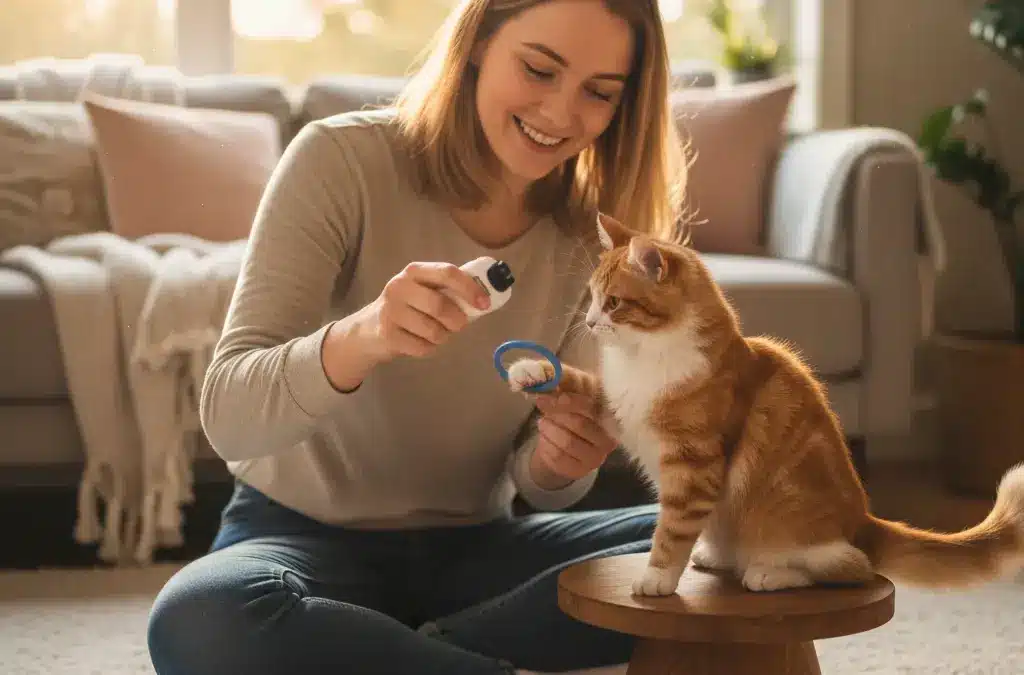How to Train Cats – A Complete Guide to Raising Well-Behaved, Confident Cats
Training a cat may sound challenging, especially to new pet owners who assume cats are independent and uninterested in learning. However, cats are highly intelligent, observant, and capable of learning routines, commands, and positive behaviors. Understanding how to train cats not only improves their behaviour but also strengthens the relationship between you and your feline companion.
While dogs receive the majority of attention in the training world, cats learn in their own unique ways. When you understand their instincts, motivations, and fears, training becomes easier, more enjoyable, and far more effective. This comprehensive guide explains everything you need to know about training cats—from natural feline behaviour to training techniques, behaviour correction, problem-solving, and the importance of having reliable pet insurance during the training process.
Why Cat Training Matters More Than Most People Realize
Many people believe cats cannot be trained, but this is a misconception. Cats learn through patterns, rewards, environmental cues, and consistent positive reinforcement. Effective training provides many benefits, including:
- Strengthening the bond between owner and cat
- Encouraging good habits
- Preventing destructive behaviour
- Improving mental stimulation
- Helping shy or anxious cats build confidence
- Ensuring safety inside and outside the home
Learning how to train cats helps create a peaceful environment for both the pet and the owner. Training also plays a role in preventing accidents and reducing risks, which is why responsible owners often choose to protect their pets with insurance, such as the Cat Care Plan offered by Fleamail.
Understanding Feline Behaviour Before Beginning Training
Before any training begins, it is important to understand how cats think. Cats rely heavily on their instincts, body language, and sensory experiences. Understanding these elements helps you communicate more effectively with your cat.
Key natural behaviours include:
Territorial nature
Cats defend and claim their space. Changes in environment can cause stress or unwanted behaviours.
Curiosity
Cats explore constantly. This trait can be used positively during training.
Independence
Cats learn best when training respects their independence. Forced training will not work.
Subtle communication
Cats communicate through body language—tail movement, ears, pupils, posture, and vocal sounds.
For an additional reference on feline behaviour, you may visit the ASPCA Cat Care Resource:
cat care
Understanding these principles allows you to train in a way that aligns with your cat’s natural instincts.
Essential Principles of How to Train Cats
Cat training is most effective when built around positive reinforcement and consistency. Punishment or force never works with felines; instead, it damages trust and increases stress.
Foundational principles of training include:
Positive reinforcement
Reward your cat with treats, affection, or clicker sounds immediately after the desired behaviour.
Consistency
Use the same command words, gestures, and rules every time.
Routine building
Cats respond extremely well to predictable patterns.
Short training sessions
Cats learn more effectively in short, frequent sessions.
Reward-based systems
Use small treats or verbal praise.
Avoid punishment
Punishing a cat makes them anxious and encourages hiding or aggression.
Using these principles ensures you successfully learn how to train cats in a stress-free manner.
Step-by-Step Cat Training Methods That Actually Work
1. Litter Box Training
Most cats learn this naturally, but kittens or newly adopted cats may need guidance.
Steps include:
- Place the litter box in a quiet spot
- Keep it clean
- Reward your cat after use
- Avoid scented litter if your cat seems hesitant
2. Teaching Cats to Come When Called
Use your cat’s name during feeding times or treat sessions.
Repeat the word “come” before rewarding.
3. Teaching Cats Not to Bite or Scratch
Redirect biting or scratching to toys.
Avoid using hands during play to prevent aggressive habits.
4. Scratching Post Training
Place scratching posts near furniture.
Use catnip or toys to encourage scratching in the right place.
5. Basic Commands
Cats can learn simple commands like sit, stay, or up using clicker training.
6. Crate Training
Introduce the crate slowly.
Feed your cat inside the crate to build a positive association.
7. Introducing New Pets
Separate the pets initially, exchange scents, and monitor first interactions closely.
Training becomes easier when owners remain calm, patient, and consistent.
Common Training Challenges and How to Solve Them
Aggression
Aggression often stems from fear, overstimulation, or lack of boundaries.
Solution: Redirect behaviour, avoid rough play, create safe spaces.
Night-time Meowing
Often caused by boredom or seeking attention.
Solution: Increase daytime play and feeding routines.
Furniture Scratching
Solution: Provide sturdy scratching posts and use feline-safe deterrent sprays.
Litter Box Refusal
Solution: Clean regularly, address stress triggers, adjust litter type.
Fear-based Behaviour
Solution: Provide calm environments, avoid loud noises, use positive reinforcement.
Training challenges can be resolved with patience and proper technique.
How Fleamail Supports Responsible Cat Owners
Training a cat is rewarding, but it comes with challenges that may require veterinary support. Unexpected injuries, behaviour issues linked to health problems, or accidents during exploration can occur. Having reliable insurance provides peace of mind during these situations.
Fleamail is dedicated to supporting responsible cat owners with transparent, simple, and dependable insurance options. You can explore their services at:
fleamail
Insurance ensures your cat receives timely veterinary care without financial stress.
Fleamail Cat Care Plan – Protection That Helps You Train Confidently
Plan Link:
fleamail cat plan
Training requires patience, and sometimes cats may injure themselves during climbing, running, or exploring. The Fleamail Cat Care Plan provides coverage for:
- Unexpected injuries
- Illnesses affecting behaviour
- Diagnostic tests
- Vet consultations
- Emergency treatments
This support allows owners to train and engage with their cats confidently, knowing help is available when needed.
The Cat Care Plan is designed with practical, real-life needs in mind, making it an excellent companion for responsible pet parents.
Expert Advice from Dr. Evan Shaw on Training Cats
As Fleamail’s leading veterinary expert, Dr. Evan Shaw emphasizes that understanding feline psychology is the key to successful training.
According to Dr. Shaw:
“Training cats requires patience and positive reinforcement. Cats do not respond well to punishment or force. Instead, they learn through encouragement, trust, and repetition. Training benefits their mental health, reduces behavioural issues, and strengthens the bond between cats and their owners. When training a cat, focusing on their comfort and emotional wellbeing should always come first.”
Dr. Shaw also highlights that health issues can influence behaviour, underscoring the importance of having reliable pet insurance to support long-term training success.
Additional Tips for Successful Cat Training
To elevate your training results, consider these extra tips:
- Keep sessions short and successful
- Use toys and interactive tools for motivation
- Create structured routines
- Provide environmental enrichment
- Use puzzle feeders to stimulate your cat mentally
- Offer safe climbing spaces
- For multi-cat households, train each cat individually
- Remain calm and patient
These simple adjustments make training far more effective.
Final Thoughts – Training Cats the Right Way
Learning how to train cats is a rewarding journey that creates harmony, understanding, and trust between you and your feline companion. By using positive reinforcement, understanding feline behaviour, and providing a supportive environment, even the most independent cats can learn good habits and new skills.
Responsible training also involves planning for your cat’s health and safety. Fleamail supports cat owners throughout this journey by offering dependable insurance protection for unexpected injuries or illnesses.
Explore more at:
fleamail
View the Cat Care Plan:
fleamail cat plan





